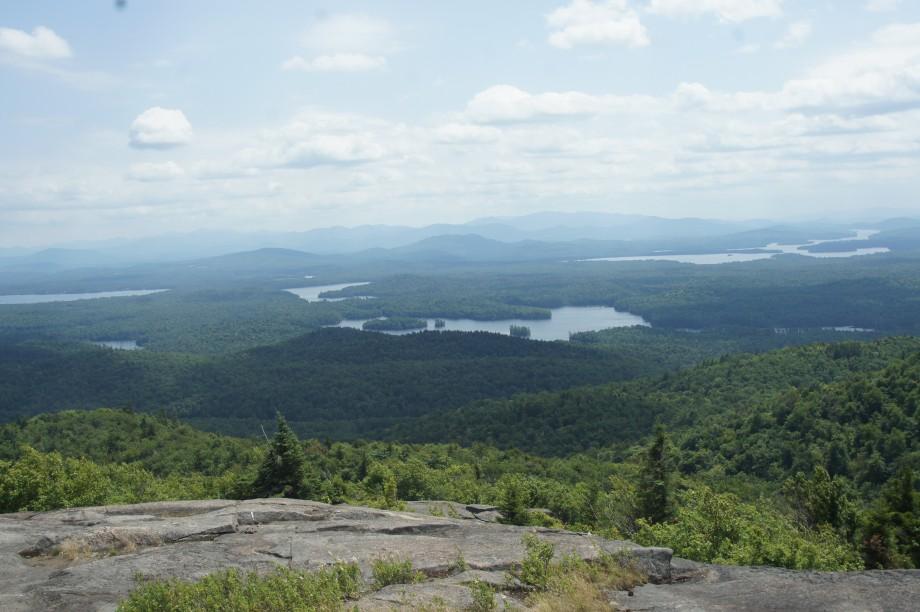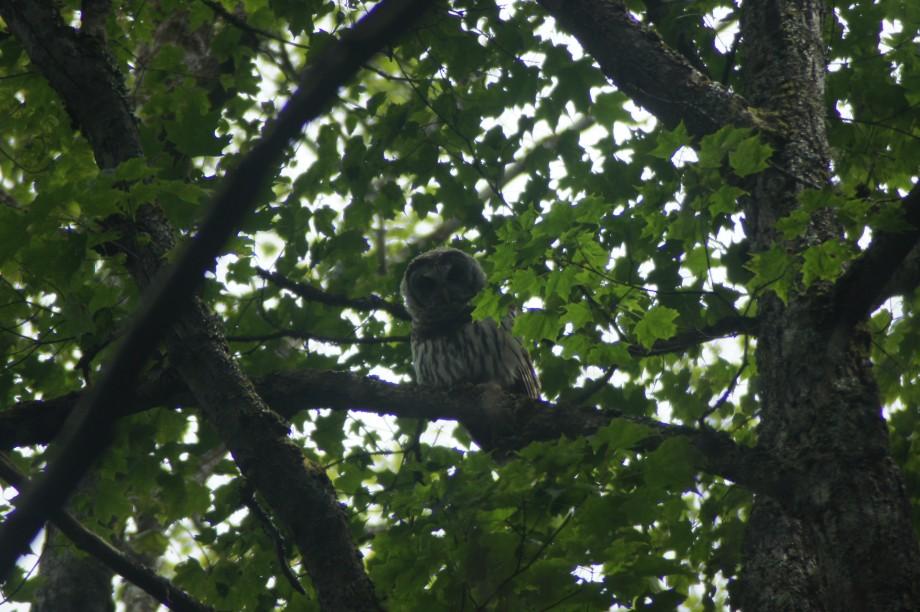Kendra, Wren, and I hiked St. Regis Mountain recently – a moderately difficult hike with a wonderful view - the trailhead for which is along Keese Mills Road just outside the Village of Paul Smiths. The initial assent is gradual and gently rolling, and we made good time through the beautiful hardwood forest. Parts of the forest are mixed with conifers, and some of my favorite sections of trail are pockets of large eastern hemlocks as the trail winds through the woods.

Not far along the trail we found a large downed tree – its roots uplifted, revealing the bedrock that did not allow them to dig deep for stability. The recent storms across the region have felled many trees, and large trees with shallow root systems are vulnerable to their power. The path led around the tree, but we soon found another downed tree. And then another. There were several along the trail – all easily bypassed to reconnect with the trail.
And, while the loss of such beautiful, large trees seems sad, the resulting sunlight that reaches the forest floor from the gap created by their loss will sprout many seedlings to take their place, and their large logs will take years to decompose, creating an environment for many plants and animals. The tip-up mound of roots and dirt can also create dens for various species, and some birds, such as winter wrens, will nest in the roots now turned on their side.
In fact, we heard the long, complicated song of a winter wren as we hiked, and I thought perhaps a few of these trees might harbor winter wren nests on them next summer. Most other birds were fairly quiet, but we heard plenty of red-eyed vireos, and black-throated blue and black-throated green warblers. Very small American toads – most hatched last summer – were seemingly everywhere, and we moved several off the trail so as not to step on them.
A little over two miles along the trail, the path reached a small stream that was flowing lower than usual due to our dry summer to date. We stopped for some food while Wren quenched her thirst and played in the stream. From the stream crossing (on a good bridge), it is about 1.2 miles to the summit (3.4 miles total from the trailhead), and the trail begins to climb fairly steadily once it leaves the water. We worked our way up the path, and took on the steepest section of the trail which in places climbs rock steps. Not far from the summit, the trail levels off and cuts a short loop around the side of the summit before clearing the trees to the rocky top.

Once on the open summit, we enjoyed the view with some water and food near the old, closed fire tower which sits on top. Tower to climb or not, the view from the rocks is nonetheless excellent, and we took in the St. Regis Canoe Area with its lakes and ponds, Upper Saranac Lake, as well as the distant High Peaks and Mt. McKenzie. While the view is great, the hot hike and warm summit without shade were making poor Wren extremely warm with no way to cool off – her black fur is merciless on warm days. So we returned to the shade of the trees and let her lie on the cool earth for a while to rest before continuing on. Then we started our descent, retracing our steps, and taking our time again at the stream crossing where she could enjoy the water.
The highlight for our hike didn't come until the end, when we had almost reached the trailhead. There we found three young, recently fledged barred owls making begging calls and flapping from tree to tree. We watched them for a while and I snuck in a little closer to snap a few dark photos in the low light. Barred owl nests have been successful this year due to the high rodent populations. And three young owls from a single nest is an excellent indicator of that success. Once they had moved further back into the woods, we hiked the final leg of the trail to the car. We finished our day with a refreshing dip in Lake Colby in Saranac Lake – a much deserved swim after a nice hike.






